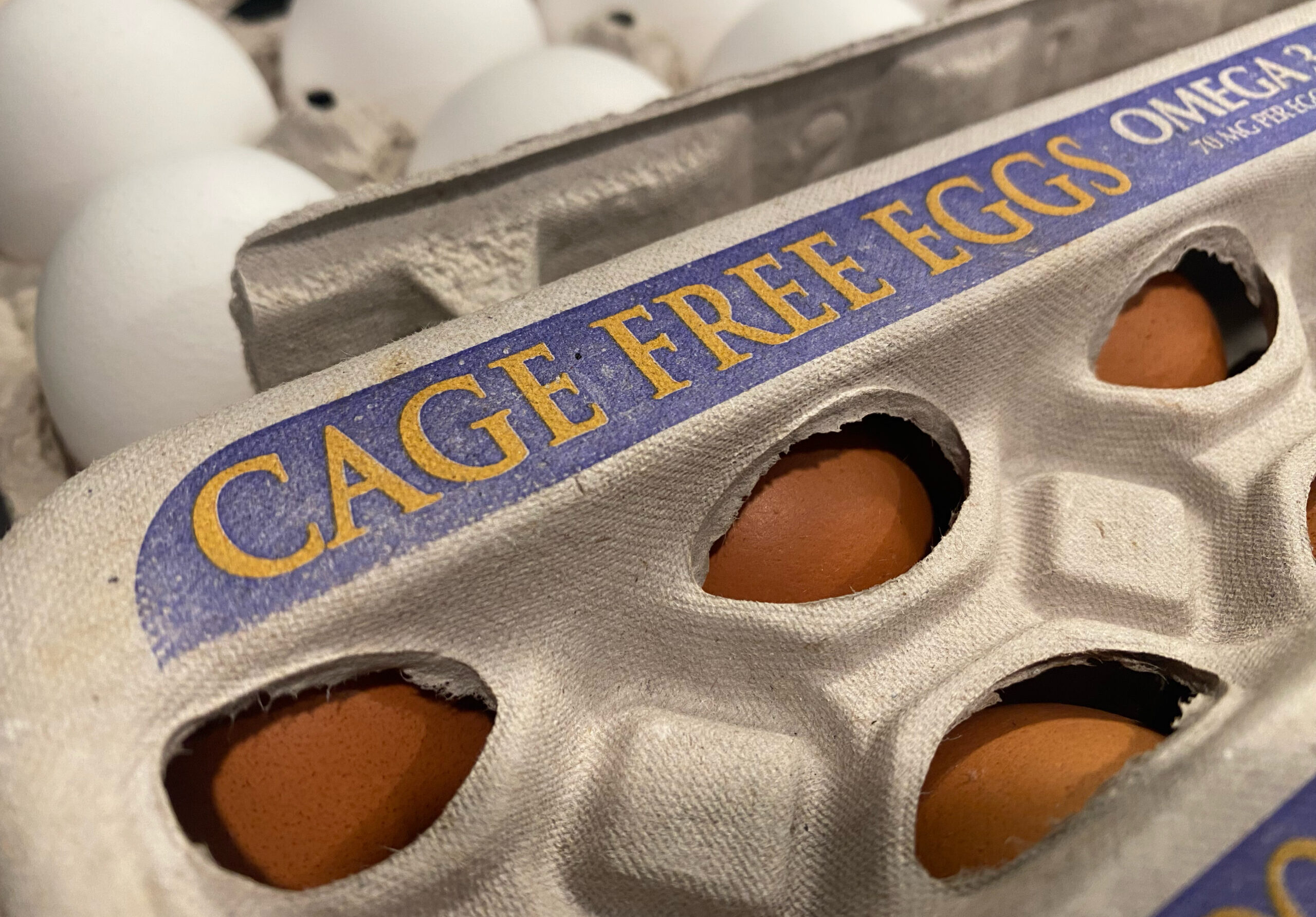Egg prices hit a record high in January as avian influenza continues decimating flocks around the country and in Maryland, according to data from the U.S. Bureau of Labor Statistics and the CDC.
The average cost of a dozen large Grade A eggs was $4.95 for customers last month, beating the last record set in 2023 by 13 cents. For retailers, wholesale egg prices also reached an all-time high in February at $7.86, according to economic data platform Trading Economics.
As a result, refrigerated shelves normally housing eggs are sometimes barren and large grocery stores such as Lidl and Trader Joe’s limit customer purchases while supplies are low. Restaurants, including national chains like Waffle House, have added surcharges on items with eggs or pulled items off the menu.
A majority of U.S. counties affected by bird flu are in the Midwest, but the virus has hit Maryland flocks with hundreds and thousands of birds along the Eastern shore. It has spread as far as Montgomery County after the Maryland Department of Agriculture on Jan. 30 confirmed a small backyard flock was positive with the virus.
Emily Metz, president and CEO of the national marketing checkoff program the American Egg Board, said in a statement to Capital News Service that highly pathogenic avian influenza, also referred to as HPAI, and high egg demand around Easter will keep egg prices high for now.
“The reality is the system for egg production is both complex and time sensitive. While we can’t predict the future, what we know right now is that our system is strained—and HPAI remains a clear and present risk to poultry flocks,” the statement said. “It’s going to take a sustained period with no additional HPAI detections on egg farms to stabilize supply.”
Bird flu basics
In January 2022, H5N1 — colloquially bird flu — was detected in U.S. wild birds for the first time in six years. Since then, over 160 million birds have been affected across more than 1,000 counties.
While experts say public health risk remains low, the virus — which pops up naturally among wild aquatic birds — has spread to more than 200 mammals including pigs, cows and cats. Humans can become infected, but so far those who have were not exposed from another human. Most confirmed cases of the virus in people stemmed from exposure to dairy herds.
Across the 954 confirmed human cases reported to the World Health Organization since 2003, the fatality rate is about 52%, according to the CDC.
In the U.S., most recent bird flu cases have ended with quick recovery and have not required hospitalization. As of early January, there have been nearly 70 confirmed human cases of H5N1 in the U.S., including one death reported on Jan. 6 after a Louisiana man had close contact with backyard birds, according to the CDC.
The intensity of the virus in humans can vary based on exposure, underlying health conditions and medical care access. There have been no confirmed human cases in Maryland and a majority of those who are infected are meat and poultry workers, CDC guidance said.
Meghan Davis, an associate professor in the Johns Hopkins Bloomberg School of Public Health, said while there isn’t an immediate threat to humans, bird flu concerns would grow if the virus acquires more traits of human-to-human transmission or mutations that make it deadlier or resistant to antiviral countermeasures.
“We say that this virus has pandemic potential,” Davis said. “Highly pathogenic avian influenza has been around for a long time. … What’s different about H5N1 is that it’s had remarkable staying power.”
While the first description of bird flu dates back to the late 1800s, the current outbreak has had widespread impacts in the U.S. since early 2022.
Day-to-day risk
Eggs and chicken are still safe to eat, according to CDC guidance. There are biosecurity measures in place that ensure infected birds are quarantined and do not appear on shelves. Even if they did, cooking poultry products at a high temperature would kill the virus and bacteria, according to Jaekeun Park, an assistant professor at University of Maryland who has studied avian influenza.
Muhiuddin Haider, a clinical professor in the University of Maryland School of Public Health, said people should not consume raw milk and maintain basic hygiene practices to minimize any risk of exposure. While there is limited research on whether bird flu can be transmitted through raw milk consumption, unpasteurized milk increases the risk of ingesting dangerous bacteria, according to the CDC.
“The risk to the food chain isn’t super high, but that’s not true if you’re drinking raw milk or feeding your pets raw meat,” Haider said.
Pets, particularly cats, can be infected, according to Ian Gill Bemis, a University of Maryland doctoral student who has studied bird flu in the animal. Mammal species are affected differently by bird flu, and cats can develop severe symptoms if infected, Bemis said.
Cats don’t need to eat raw food or milk and should be kept inside if possible, Bemis said.
“If you can keep your cat inside, that’s a great first step, because your cat won’t go and predate and eat wild birds,” Bemis said.
It isn’t clear how long this outbreak will last in the U.S. or what specific factors are contributing to its persistence, Park said. For now, egg prices will continue to be high due to low supply and people should take precautions, especially if they are high risk or work with poultry.
“We always have to be worried about this type of thing,” Park said. “It’s a fairly low chance but extremely high consequence.”

